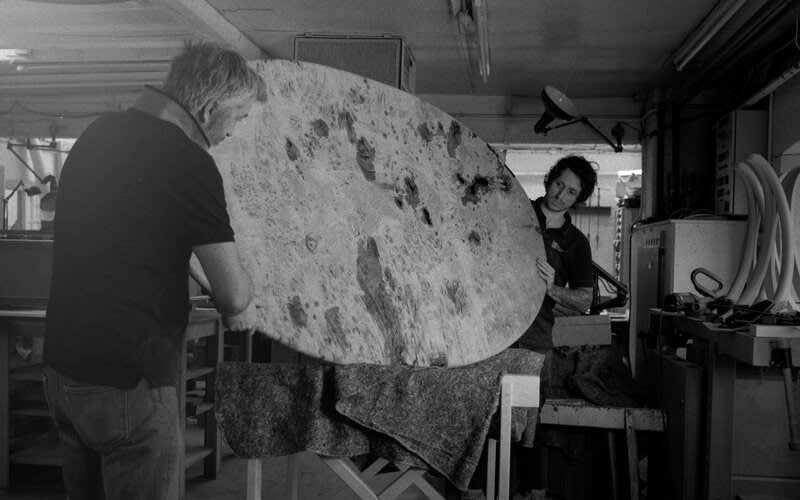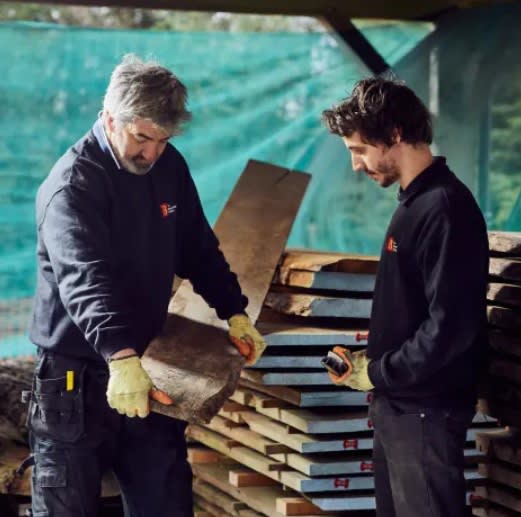
At Barnsley Furniture, timber is at the centre of everything we do. We locally source much of our wood and only select the best of the best based on our own specifications. Wherever possible, we use timber from a single tree so that all parts of our furniture will match each other. We look for the richest colour and best figure whilst also highlighting the natural variations or imperfections in the timber.
Each piece of wood is seasoned in drying sheds to help reduce movement and enhance durability, a vital part of crafting long-lasting furniture. Oak, in particular, is our favourite here at Barnsley Furniture.
Timber is a timeless and versatile material, but with so many types available, it’s impossible to use just one for everything. Each wood has its own unique texture and characteristics. Depending on your budget and the furniture piece you’re looking to create, your choice of timber might vary.
In this blog, we’ll explore the best types of wood for furniture and what makes each one suited to different styles and purposes.
Why does wood choice matter in furniture making?
The type of wood you choose affects more than just how a piece looks. It influences durability, cost and sustainability.
Bespoke furniture is built to last, the quality of the wood matters just as much as the craftsmanship. In simple terms, hardwoods (like oak and ash) grow more slowly, making them denser and stronger. Softwoods (like pine) grow faster and are lighter, which can be beneficial for certain furniture styles or budgets.
The best types of wood for furniture
Oak -
A British classic and our favourite. Oak is strong, heavy and hard-wearing, with a beautiful natural grain and warm tones. It’s ideal for furniture pieces like dining tables, cabinets, wardrobes, and really, anything you want to last a lifetime.
Seasoned oak is less prone to movement, such as swelling or shrinking, which is key for long-term stability. We use oak often, for example, in our Side table.

Ash -
Light in colour with more grain than oak, ash is flexible yet durable. It's ideal for curved or shaped furniture, like chairs or armrests, due to its natural elasticity.
Ash works beautifully for modern furniture and Scandinavian-inspired designs, where a sleek, minimalist look is key.
Walnut -
Dark, rich and elegant. Walnut has a smooth finish and luxurious look, which makes it perfect for statement pieces. It’s less common in the UK, which is why walnut furniture tends to sit at the higher end of the price range.
Walnut is ideal for feature furniture like desks, headboards or centrepieces that are designed to stand out and be noticed. Our stunning dining table with chairs and single dining table are both crafted from walnut and showcase its luxurious look.

Beech-
Beech is pale, fine-grained and extremely strong. It’s a commonly found timber in the UK and is often used in structural furniture parts like legs or frames.
Its subtle look makes it a great choice for painted finishes, smaller pieces like chairs, or solid timber components.
Elm-
Once widely used in the UK, elm is now rarer due to Dutch elm disease. But when you do get your hands on it, it’s worth the wait.
Elm’s swirling grain and distinctive texture make it perfect for one-of-a-kind pieces full of character.

What to consider when choosing the type of wood for your furniture
When selecting the right timber, it’s more than just looks, though that’s certainly part of it. Here are a few key things to consider:
- Aesthetic: What colour, tone and grain suit your space?
- Function: Will the piece be used every day, or is it more decorative?
- Environment: Will it be near a radiator or in a humid space?
- Sustainability: Locally sourced wood always wins in our book.
- Budget: Some timbers are more cost-effective than others, but quality always shows.
No one size fits all
There's no single ‘best’ wood for furniture. It all depends on your space, style and how you want to use the piece.
At Barnsley Furniture, we work closely with each customer to help them choose the perfect timber for their bespoke piece. Whether you’re after a practical design that fits effortlessly into your home or a show-stopping centrepiece with real character, we’ll help guide you to the right wood for the job.
Are you missing that statement furniture piece in your space?
Get in touch with us to explore your options or to start your furniture project, and discover the beauty of furniture made from the finest timber.